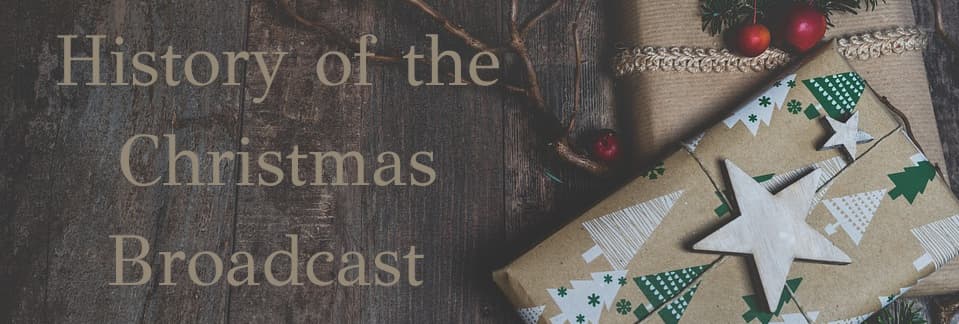
The Royal Christmas Broadcast at 3:00pm on 25th December is an important part of the Christmas Day festivities for many in Britain, and this year, for the first time in seventy years, we will see the speech being delivered by a new monarch; King Charles III.
This annual tradition creates a sense of continuity for the public and gives an opportunity for the monarch to speak directly to the British people. But where did it all begin? Here, we will be exploring the history of the Christmas broadcast.
The start of the Christmas Broadcast
George V was the first monarch to deliver the Christmas broadcast in 1932. With wireless radio becoming more and more popular, the BBC tried for many years to get the King to participate in the broadcast, but it wasn’t until 1932 when he finally agreed. The idea behind the broadcast came from the founder of the BBC, Sir John Reith, who wanted to establish the Empire Service (now the BBC World Service) to all parts of the British Empire.
The King’s speech was written by Rudyard Kipling, and two rooms in Sandringham were converted into a temporary broadcasting studio. The actual address was recorded in a cupboard to block out any background noise being picked up from the microphone, however, the studio was used to take an official image of George V seated in front of a microphone.
It was decided that the speech would be broadcast at 3pm, as this was the best time to reach the British Empire by short waves from the transmitters in Britain. The speech, which lasted for less than a minute and began with: “I speak now from my home and from my heart to you all”, had an audience of 20 million people.
George V and the public were equally impressed with the success of the broadcast, and so he continued with this until his death in 1936. George V’s eldest son, Edward VIII, reigned for less than a year so never delivered the Christmas broadcast. It was resumed in 1937 by Edward’s VIII younger brother, George VI, who thanked the public for their support during his first year as King.
As it was not yet recognised as a yearly tradition, there was no Christmas broadcast in 1938, however, it was firmly established the following year as a result of the outbreak of World War II. George VI delivered his broadcasts live, offering reassurance to his people and helping to boost morale during the war. George VI’s final Christmas broadcast in 1951 was the only one in which he had pre-recorded due to his ill-health.
Queen Elizabeth II and the Christmas Broadcast
Elizabeth II delivered her first Christmas radio broadcast in 1952, just ten months after ascending the throne. She spoke about the importance of the Christmas broadcast to her and her family, and advised the public that she would continue with this tradition. As Queen, Elizabeth II delivered the Christmas broadcast every year except for one; 1969. This was due to a Royal Family documentary already being scheduled for the Christmas period. Instead, her address was written and posted in newspapers for the public to read.
The first televised Christmas broadcast was delivered live by Elizabeth II at Sandringham in 1957. She hoped that this would make her Christmas message “more personal and more direct”. The location of the Christmas broadcast is usually Buckingham Palace, but it has also taken place at Sandringham, Windsor Castle, and even at Combermere Barracks.
Since 1959, Elizabeth II has pre-recorded the Christmas broadcast. This is done so that the videos can be sent to Commonwealth countries to be broadcast at a convenient time. Planning for the broadcast usually starts early, with Elizabeth II choosing a theme in which she would like to address. Footage is then filmed during public engagements throughout the year and used where appropriate as part of the Christmas Day speech.
Her Late Majesty has been part of our lives for such a long time that we are now faced with the complete change of many annual traditions, including the Christmas broadcast. In tribute to the life of service and devotion of Queen Elizabeth II, a new one-eighth sovereign coin has been announced. You can view this, and all the other denominations available in this remarkable range HERE.


